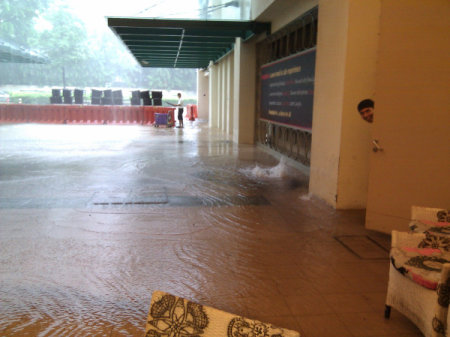[ extracted from Yahoo.com -By Andrew Loh | SingaporeScene – Sun, Jun 5, 2011 ]
On 28 May, at a dinner to thank People's Action Party (PAP) volunteers,
Prime Minister Lee Hsien Loong defended its grassroots leaders and activists from accusations of not having provided proper feedback to the party.
Critics said this shielded
party leaders from being cognizant of the unhappiness on the ground surrounding various issues.
However, PM Lee said the fault could lie on
party leaders themselves.
The Straits Times reported the PM as having said:
"Unfortunately, we may not have picked up and interpreted it correctly, and acted on it the way we should have done, but it's not for lack of trying on the part of the activists."
To pinpoint the communication failure at the party grassroots channels alone would be simplistic and inaccurate. It is not just how feedback from the grassroots were "interpreted" that should be the cause for concern.
The government, and indeed the PAP as well,
has many channels to receive and distil feedback -- both within and without the party or government framework. There are the newspapers, the Internet, the Meet-The-People sessions, the much-touted REACH portal, even radio shows and public forums.
The question therefore is: How did the government miss all the signs and was apparently deaf to the alarm bells?
Crux of the matter
One popular reason believed by its detractors, and not without justification, is that government leaders had become arrogant, perhaps believing in their own superior wisdom and dismissing criticisms and genuine feedback as "noise", as one minister put it during the Tin Pei Ling saga.
Having many feedback channels is useless if, at the end of the day, these are not taken seriously.
Thus, it is not about the channels per se or even the processes and procedures in place. It is about the mindsets which government leaders adopt towards criticisms and queries. This really is the crux of the matter. Indeed, the grassroots are not to blame, ultimately.
Ministers, who are themselves MPs in their constituencies, conduct Meet-the-People sessions, too, and interview residents face-to-face. They also speak at public forums.
New
Minister of State, Amy Khor, has been and still is in charge of the REACH feedback portal. Ministers too are aware of what is reported in the newspapers and said on the Internet.
So really there is no excuse for not having "interpreted" the sentiment "correctly". After all, even Brigadier-General Tan Chuan Jin, new Minister of State, said he had been aware of the "frustrations, angst" even when he was being considered for candidacy by the People's Action Party for the May elections. "Obviously you hear it from friends, family, so that was something I was very conscious of," he said on Channel NewsAsia.
The problem could lie squarely on the mindsets and attitudes of those at the very top. Consider how government ministers have stoutly, and at times arrogantly, defended their policies when perceived flaws were brought to their attention.
Sometimes, those who highlight these flaws are scolded and dismissed as "irresponsible", or "daft" and ascribed many other not-so-kind terms.
Obvious issues
There needs to be a change in attitude towards criticism. Ministers must realise that gone are the days when they could hide behind a wall of silence, protected by a compliant media which continuously sing their praises while the masses outside cry out for relief.
Yet, some problems in the last few years were so significant that even if no one brought it to the ministers' attention, he should have known about them anyway.
Consider the sentiment surrounding the housing issue. Many had been expressing unhappiness that prices of public flats were getting beyond their reach. Yet, the minister in charge repeatedly stood his ground and vehemently defended his policies, instead of perhaps taking the feedback seriously and looking into whether there was any truth to them.
One newspaper even gave the minister a weekly column to explain why his policies were right even as prices continued to escalate.
The paper would have done better if it had used the print space to
highlight to the minister what were wrong with his policies instead.
Another example is the tented homeless communities spread out across public parks in Singapore in 2009 and 2010. How could the Minister for Community Development, Youth and Sports be apparently ignorant of these?
The point here is not about who gives feedback, or the channels available. It is, I would argue, not even about how feedback is "interpreted".
It is ultimately about whether ministers accept that criticisms are important, despite who is making them, and whether it is willing to see and acknowledge that one cannot be right all the time.
It is heartening to know that PM Lee has now embarked on a "reform agenda", as some have put it, and that his new
Deputy Prime Minister,
Mr Tharman Shanmugaratnam, has set the tone by promising to listen to feedback.
One hopes that his attitude will be an example to his MPs and that they will shed that armour of arrogance once and for all -- the holier-than-thou mindset which drew a most stunning backlash during the recent elections.
[ Andrew is the co-founder of socio-political website The Online Citizen and helmed it for more than four years until June 2011. He also writes frequently on issues which are close to his heart.]
.






























